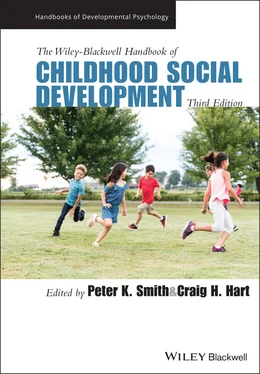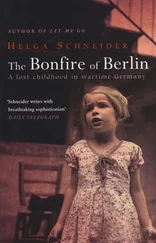30 LeVine, R., Dixon, S., LeVine, S., Richman, A., Leiderman, P. H., Keefer, C., & Brazelton, Y. B. (1994). Childcare and culture: Lessons from Africa. Cambridge University Press.
31 Lee, N. (2001). Childhood and society: Growing up in an age of uncertainty. Open University Press.
32 Mead, M. [1928] (1971). Coming of age in Samoa: A study of adolescence and sex in primitive societies. Pelican.
33 Mead, M. (1930). Growing up in New Guinea: A comparative study of primitive education. W. Morrow and Company.
34 Meehan, C. L., & Crittenden, A. N. (Eds.). (2016). Origins and implications of the evolution of childhood. School of Advanced Research (SAR) Press.
35 Montgomery, H. (2009). An introduction to childhood: Anthropological perspectives on children’s lives. Blackwell.
36 Montgomery, H. (2017). Anthropological perspectives on children’s rights. In M. Ruck, M. Peterson‐Badali, & M. Freeman (Eds.), Children’s rights: Global and multidisciplinary perspectives (pp. 97–113). Taylor and Francis.
37 Morrow, V. (2011). Understanding children and childhood. Centre for Children and Young People, Southern Cross University.
38 Prout, A. (2005). The future of childhood. Routledge Falmer.
39 Read, M. (1968). Children of their fathers: Growing up among the Ngoni of Malawi. Holt, Reinhart and Winston.
40 Richards, A. (1956). Chisungu: A girls’ initiation ceremony among the Bemba of Northern Rhodesia. Faber and Faber.
41 Rogoff, B. (1990). Apprenticeship in thinking: Cognitive development in social context. Oxford University Press.
42 Rogoff, B. (2003). The cultural nature of child development. Oxford University Press.
43 Scheper‐Hughes, N., & Sargent C. (Eds.). (1998). Small wars. The cultural politics of childhood. University of California Press.
44 Serpell, R., & Marfo, K. (Eds.). (2014). Child development in Africa: Views from inside. Jossey‐Bass.
45 Solberg, A. (1997). Negotiating childhood: Changing constructions of age for Norwegian children. In A. James & A. Prout (Eds.), Constructing and reconstructing childhood: Contemporary issues in the sociological study of childhood (pp. 126–144). Falmer Press.
46 Stephens, S. (Ed.) (1995). Children and the politics of culture. Princeton University Press.
47 Tatlow‐Golden, M., & Montgomery, H. (2021). Childhood studies and child psychology: Disciplines in dialogue. Children and Society, 35(1), 3–17.
48 Twum‐Danso, A. (2009). Reciprocity, respect and responsibility: The 3Rs underlying parent‐child relationships in Ghana and the implications for children’s rights. International Journal of Children’s Rights, 17(3), 415–432.
49 United Nations (1989). United Nations Convention on the Rights of the Child. https://www.cypcs.org.uk/rights/uncrc/full‐uncrc
50 Uprichard, E. (2008). Children as “beings and becomings”: Children, childhood and temporality. Children & Society, 22(4), 303–313.
51 Valentine, G. (1997). “Oh yes I can.” “Oh no you can’t”: Children and parents’ understandings of kids’ competence to negotiate public space safely. Antipode, 29(1), 65–89.
52 Whiting, B. (1963). Six cultures: Studies of child rearing. Wiley.
53 Whiting, B., & Edwards, C. P. (1988). Children of different worlds: The formation of social behavior. Harvard University Press.
54 Whiting, J. (1977). A model for psychocultural research. In P. H. Leiderman, S. Tulkin, & A. Rosenfeld (Eds.), Culture and infancy: Variations in the human experience (pp. 29–48). Academic Press.
55 Whiting, J. (1994). Fifty years as a behavioral scientist: Autobiographical notes. In E. H. Chasdi (Ed.), Culture and human development: The selected papers of John Whiting (pp. 14–44). Cambridge University Press.
56 Whiting, J., & Child, I. (1953). Child training and personality: A cross‐cultural study. Yale University Press.
57 Whiting, J., Kluckhohn, R., & Anthony, A. (1958). The function of male initiation ceremonies at puberty. In E. E. Maccoby, T. M. Newcomb, & E. L. Hartley (Eds.), Readings in social psychology (pp. 359–370). Holt, Rinehart and Winston.
58 Woodhead, M. (1999). Reconstructing developmental psychology: Some first steps. Children & Society, 13(1), 1–17.
59 Wyness, M. (2015). Childhood. Polity Press.
PART III Ecological Contexts
Children grow up in a complex system of relationships that are affected by influences found in different levels of the surrounding environment. As illuminated in other Parts of this Handbook, social developmental characteristics are molded as children’s biologically influenced dispositions join with environmental forces in ways that affect how children perceive their immediate social environment and respond to it. This Part focuses more on the environmental side of the equation, emphasizing the physical environment, the effects of war and famine, and the impact of the climate crisis and the Covid‐19 pandemic. However, it starts with an overview of the general ecological perspective.
Rachel Maunder introduces some main theorists of the ecological perspective on development, including Gibson, who argued that the environment offers opportunities or “affordances” for behavior, and Elder, whose life course theory considers historical context and social timing within developmental trajectories, exemplified by the famous three‐generational study of the impact on children who lived through the Great Depression in the United States in the 1930s. The preeminent theorist is Bronfenbrenner, who proposed concentric circles of influence, moving out from microsystems (the home, family, peer group, and school), the mesosystem (relationships between microsystems such as the home–school relationship), the exosystem (indirect effects on the child such as parental employment), and the macrosystem (societal factors such as cultural beliefs, laws, and politics). A later addition was the chronosystem (the influence of time on development). Maunder looks in detail at two areas. One is parenting and attachment; there are important historical changes and cultural differences that impact on this relationship (see also Chapter 6). Another is school bullying, where the wider community context and social and religious norms and policies can impact on discriminatory and bullying behaviors, especially against minority groups (see also Chapter 32). She ends by considering research implications, and those for professional practice.
Sara S. Whipple and Gary W. Evans consider the impact of aspects of the physical environment on social development. Like Maunder, they cite Gibson and Bronfenbrenner as important influences, as well as Barker’s ecological psychology. They start by considering noise (unwanted sound), and note that while effects of noise on children’s psychological health are mixed, there is good evidence for an association with hyperactivity/inattention in children. Crowding has been another area of research, with varying findings regarding aggression and play behaviors perhaps explained by differentiating between spatial density, social density, and available resources. Moving to the home environment, they consider research on chaos, with an important distinction between instability (such as changes in caregivers) and disorganization (such as lack of routines). These can impact on conduct problems and social skills. Whipple and Evans also consider moderator variables for these associations, such as gender and temperament. They suggest directions for future research, such as looking for nonlinear effects, and call for more studies outside developed countries.
It is more often (although not entirely) outside the developed countries, that children experience severely distressing societal‐level phenomena such as conflict, war, and famine. Charles N. Oberg, H. R. Hodges, and Ann S. Masten point out how conflict and famine are often interrelated; an example at the time of writing is the Yemen. These can clearly impact children directly, and also through, for example loss of parents and caregivers and increased levels of stress. Famine can severely stunt physical growth, including the brain (cf. Chapter 3). These adverse effects can be cumulative. Besides the risks in these situations, the authors also discuss resilience factors, such as good attachment relationships, good self‐regulation skills, and a sense of belonging to a community. They conclude with a series of important recommendations on how to promote health and resilience during conflict and famine; these include well‐informed and culturally sensitive ways of prioritizing children’s needs in conflict and famine situations, creating child‐friendly spaces, and supporting families.
Читать дальше












